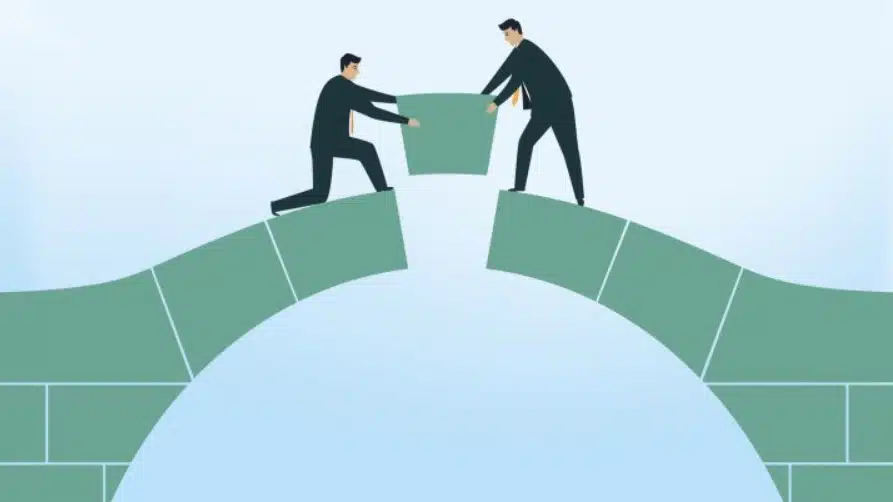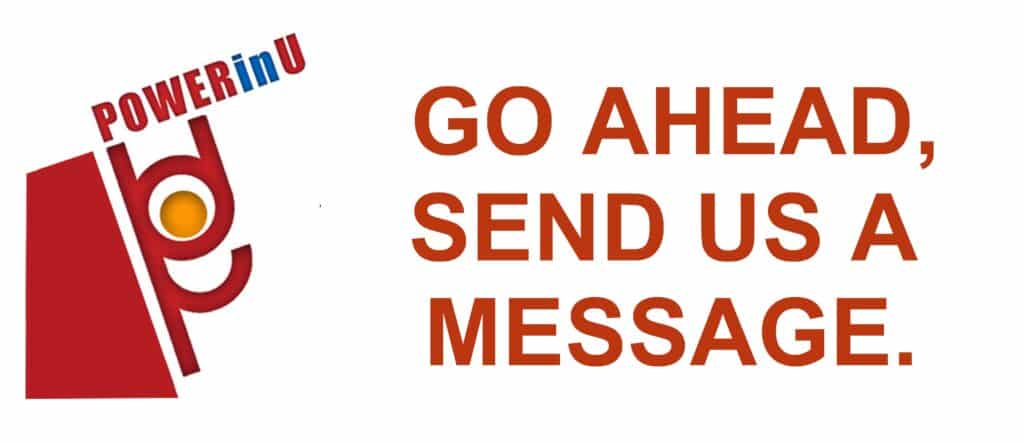
Imagine two people standing across a wide expanse from one another, each with his or her own set of intentions, perspectives, ideas, interests, positions, feelings, and concerns.
They would like to have a conversation that resolves a problem they share, but the conversation is difficult because the expanse represents a large gap in their understanding of one another. The only way that they can solve the problem in mutually beneficial ways is to build a bridge of understanding across this gap separating them.
When two people try to persuade each other with compelling reasons, they are rarely successful in persuading each other’s emotional states. This conversation will be much more productive if either or both parties begin to build the bridge of understanding from the other person’s side of the bridge.
Empathy is a set of listening behaviors that builds a bridge of understanding between two people. To practice empathy, you need to understand the priority of inquiry over advocacy.
In other words, if you want to influence people, you need to understand empathically the power of their point of view and to feel the emotional force with which they believe it.
As Stephen Covey’s 5th habit in his book The 7 Habits of Highly Effective People says ~ “Seek first to understand, and then to be understood.”
THE TWO MESSAGES YOU SEND
Remember that every communication has two messages :
- The Content Message: the actual meaning of the words you want your audience to hear
- The Feeling Message: the way you really feel about the person
Content is conveyed through words; feeling is conveyed through body language and tone of voice. This means that if you really want to communicate successfully with people, you need to send them positive feeling messages.
To understand empathy, let’s try to understand the behaviours that are opposite of empathy. They are behaviors that break down the flow of communication and increase the emotional distance between two person. These include communication spoilers or feeling blockers. Some examples include
>> Judging responses such as criticising or diagnosing
>> Sending solutions such as ordering, advising or excessive questioning
>> Invalidating responses, like dismissing or diverting
BUILDING PERSONAL BRIDGES THROUGH EMPATHY
Personally, it’s not been an easy journey for me to be truly empathetic. As a manager who had KPI’s, priorities and urgent deliverables to fulfil, it was easier to give solutions and tell others what to do. I’ve also been used to multi-tasking that pausing, to truly listen to both the content and the emotions not expressed, was not my default.
Through the years, as a more mature and experienced people leader, entrepreneur, consultant and coach, I’ve learned to take the time, to pause, listen and empathize. One of my aha moments when I was a new coach was that I did not need to dive-in right away and tell things, to advise or to be correct.
When I actually paused and stayed comfortable with the silence, the other person opened up. And then I simply listened, as the bridge of understanding was magically built. With empathetic communication and coaching skills, I’ve gained invaluable trust and earned the right to advance in important relationships. I can say indeed that empathy has built strong bridges of connections and relationships!

